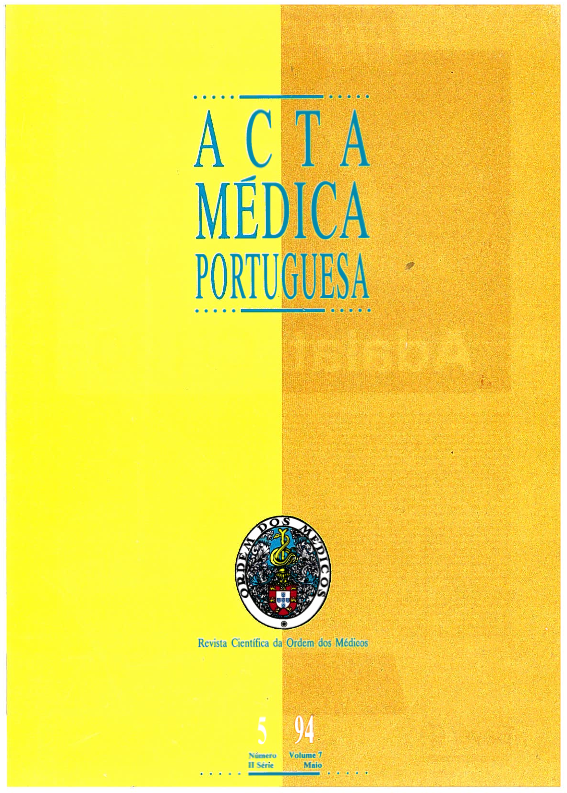Neurocisticercose. Análise imagiológica de 35 casos.
DOI:
https://doi.org/10.20344/amp.2902Resumo
Neurocysticercosis (NCC) is the most frequent parasitic disease of the central nervous system. Other Portuguese works showed it to be endemic in the north of our country. The purpose of this paper is to aid the characterization of NCC in the geographic area of our Institution. We retrospectively reviewed the findings of computed tomography (CT) in 35 patients with NCC, including 23 adults and 12 children. There was no significant sex predominance in adults, however, in children the female/male ratio was 2. We found important clinical and radiological differences between adults and children. In the pediatric age group, the active forms were characteristically solitary or scarce inflammatory lesions. This radiologic picture was associated with neurologic focal signs. In these cases, a trial with anticysticercoid drugs is important to settle the diagnosis and avoid brain biopsy. Almost all of our cases (94%) were parenchymatous forms. This can be explained, in part, by the limitations of CT in the ventricular and cisternal compartments. Magnetic resonance is the ideal method in these locations. About half our patients (49%) were of African origin, most of them immigrants from the former Portuguese colonies where NCC is endemic.Downloads
Downloads
Como Citar
Edição
Secção
Licença
Todos os artigos publicados na AMP são de acesso aberto e cumprem os requisitos das agências de financiamento ou instituições académicas. Relativamente à utilização por terceiros a AMP rege-se pelos termos da licença Creative Commons ‘Atribuição – Uso Não-Comercial – (CC-BY-NC)’.
É da responsabilidade do autor obter permissão para reproduzir figuras, tabelas, etc., de outras publicações. Após a aceitação de um artigo, os autores serão convidados a preencher uma “Declaração de Responsabilidade Autoral e Partilha de Direitos de Autor “(http://www.actamedicaportuguesa.com/info/AMP-NormasPublicacao.pdf) e a “Declaração de Potenciais Conflitos de Interesse” (http://www.icmje.org/conflicts-of-interest) do ICMJE. Será enviado um e-mail ao autor correspondente, confirmando a receção do manuscrito.
Após a publicação, os autores ficam autorizados a disponibilizar os seus artigos em repositórios das suas instituições de origem, desde que mencionem sempre onde foram publicados e de acordo com a licença Creative Commons









